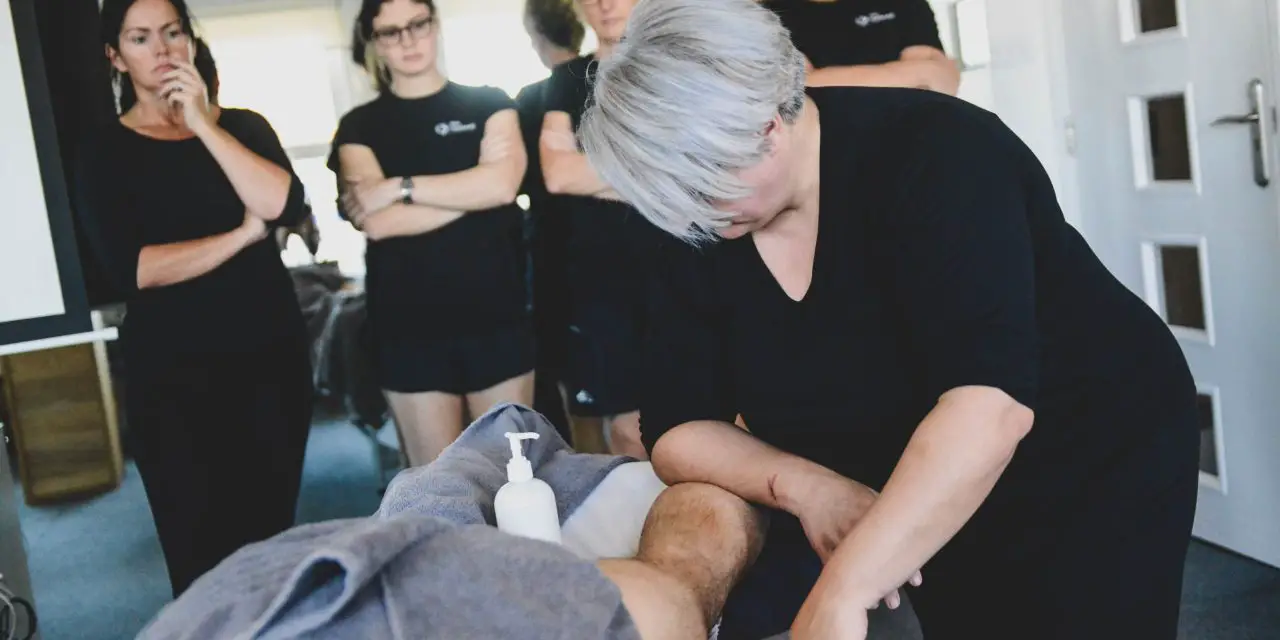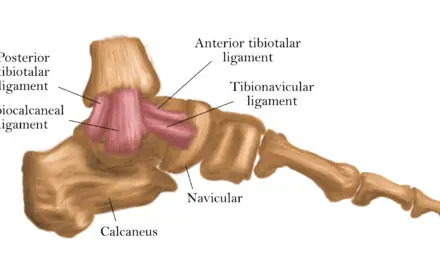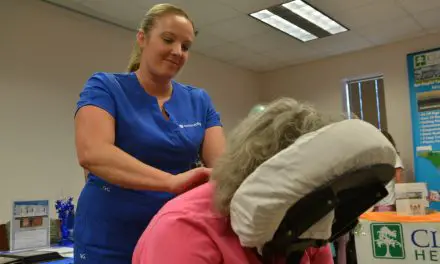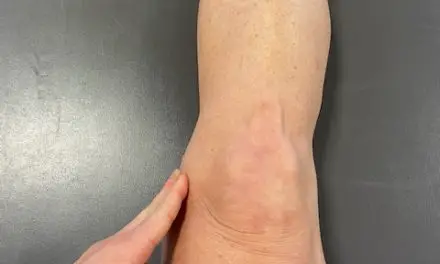Like in Canada, the U.S., and parts of continental Europe, more manual therapists in the U.K. are moving toward a biopsychosocial model approach to their work rather than the biomechanical model that still dominates current massage and other manual therapy curriculum. Some practitioners have already updated their narrative about how massage or other types of therapy work and are trickling that knowledge in their continuing education classes in the U.K. One may argue that the primary reason why people seek massage therapy or other manual therapies is for pain relief—typical issues like chronic low back pain, knee pain, shoulder pain, and hip pain. Therefore, providing up-to-date information about pain can help avoid giving patients and clients the wrong message about their condition. If they are misinformed, they cannot give valid consent to treatment.
Nicki Lee (Hampshire, U.K.)
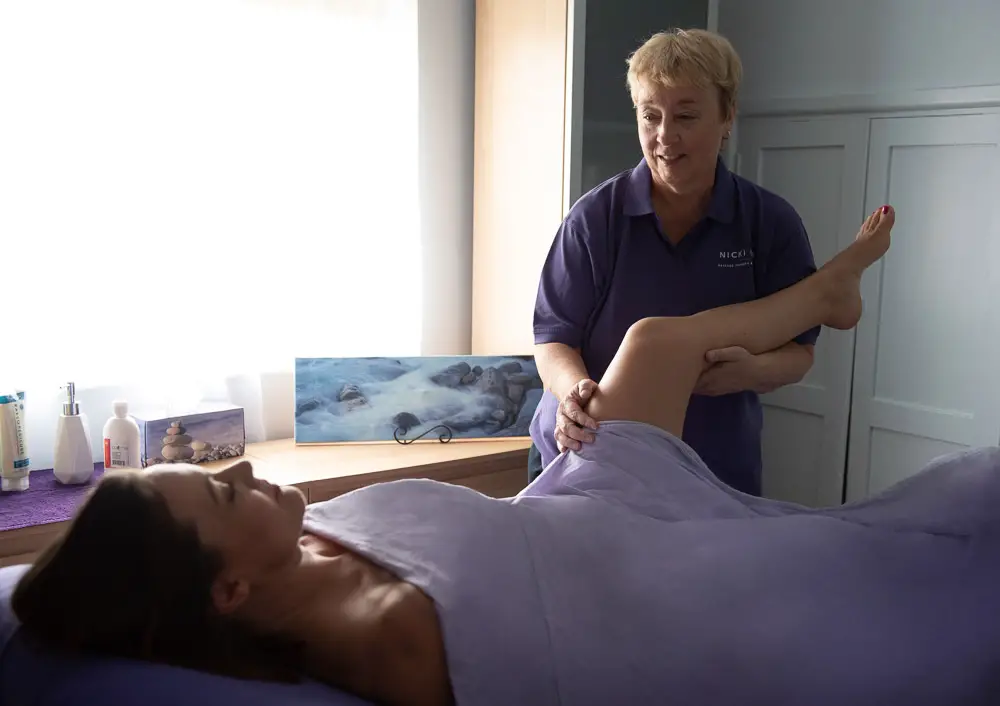
Nicki Lee started her massage practice in 1999 and has continued to update her knowledge and skills with her continuing education courses. Photo by Maria Cristina Ligata.
Many massage therapists started their career because they were once clients or patients themselves and see the benefit and value of massage therapy. Nicki Lee is one of them when she first moved to the U.K. from Southern California in the U.S.
“I learned to love massage through my own aching back. Regular massage kept me pain free,” Nicki said. “When I moved to the U.K., I signed up for an evening class in massage, just out of interest. Little did I know that [anatomy and physiology] was involved! It was the beginning of my deep appreciation of health and biology.”
With more than 20 years of experience as a massage therapist, Nicki started her own practice at Nicki Lee Massage Therapy and Training in 1999 after getting her diploma from the International Therapy Examinations Council (ITEC). Back then, it was about a 100-hour course within a nine-month period. She later earned a higher diploma in Sports Therapy, a year-long course from the International Institute of Sports Therapy, which is part of the Vocational Training Charitable Trust (VTCT).
“While I only wanted to practice massage, this course was the most comprehensive I could find at the time,” Nicki said. “The ‘basic’ massage course that most people still attend only teaches Swedish massage, and I knew from my experiences of receiving massage in the U.S. that there was much more I could learn and offer.
Currently, she teaches several one- to two-day continual professional development (CPD) workshops, which include:
“Most of these subjects would be part of a more thorough curriculum, so my students are usually either beauty therapists who have only received instruction through one course module, massage therapists who have learned Swedish massage, or people qualified in sports massage looking for more in-depth training. I occasionally have physiotherapists or other manual therapists attend,” Nicki explained.
She also thinks that the biopsychosocial (BPS) model of pain is gaining “more traction” among physiotherapists, osteopaths, and other manual therapists, but for most massage therapists in the U.K., it is likely a “new” concept.
“Most of my courses are very hands-on, with students learning new physical techniques. There is some theories, too, of course, and this is where my teaching has changed the most over the years, and certainly since I became familiar with the BPS model. For example, I still teach muscle energy technique, and use it frequently with clients. My method hasn’t changed, but the explanation of ‘why’ it may work has changed a lot.
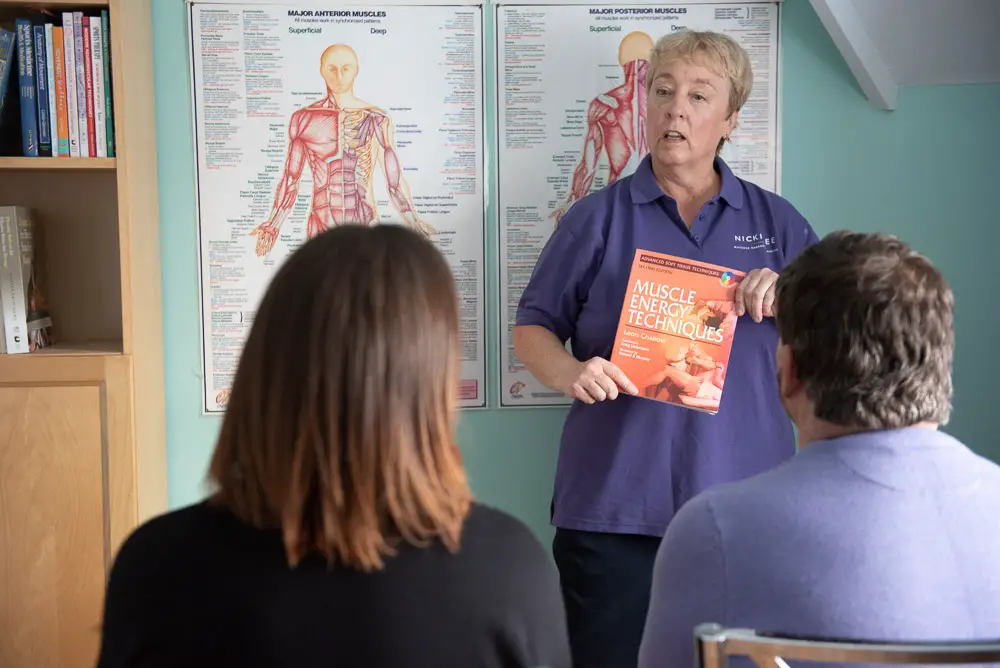
Photo by Maria Cristina Ligata.
“An even more dramatic example is my Trigger Point Massage workshop. Now many massage therapists in the U.K. may not have been taught about trigger points at all, and many are excited to learn about this and how to ‘get rid of the knots’. I stopped teaching this a few years ago when I realised the theory I was teaching was almost certainly incorrect. Paul Ingraham of PainScience.com gave me some excellent advice – ‘teach the controversy’. I rewrote most of the course and began offering it again. Students seem intrigued that I am happy to say, ‘I don’t know’ and that I’m eager to continue learning myself.
“I enjoy teaching even more than working with clients, and I hope to continue for many years. While I don’t teach BPS per se, it influences everything I do teach. I am not an expert, but sharing some ideas from these theories have proven to be extremely useful to my clients in pain.”
For updates of Nicki Lee’s classes, visit www.nickileemassage.com.
Mike Grice, Daniel A. Williams (Birmingham, U.K.)

Education, and Daniel A. Williams, who is one of the first to graduate from MTE’s diploma program. Photos courtesy of Mike Grice and Daniel A. Williams.
Movement Therapy Education (MTE) is one of the few manual therapy continuing education that bridges pain science with clinical applications for various physiotherapists, sports massage therapists, various healthcare professionals, and even personal trainers. Founded by Mike Grice nearly 20 years ago, MTE shifts away from the old thinking about pain and movement, such as “poor posture contributes to back pain,” toward a more patient-focused paradigm that is based on the current understanding of pain science.
“[Movement Therapy Education] is a course that has evolved over the last 15 years in to a three-year, 25-module therapy diploma that is focused on training clinicians in a clinic-based environment,” Mike said. “The modules are split up in to four phases. Phase 1 is essential: we introduce learners to pain science from day one. We realise that it is easy to say what pain science is, but harder to implement it. Throughout the phases, we refer back to those key underpinning principles from phase one with everything we do.”
MTE is also co-taught by Daniel A. Williams, who is a former student of Mike and one of the first to take the Movement Therapy Diploma course.
“I attended many of the modules in the diploma multiple times to gain as much of an understanding as I could,” Daniel said. “This enabled me to be competent enough to teach some of the modules on the diploma, which include a lot of the hands-on and exercise based rehabilitation modules.”
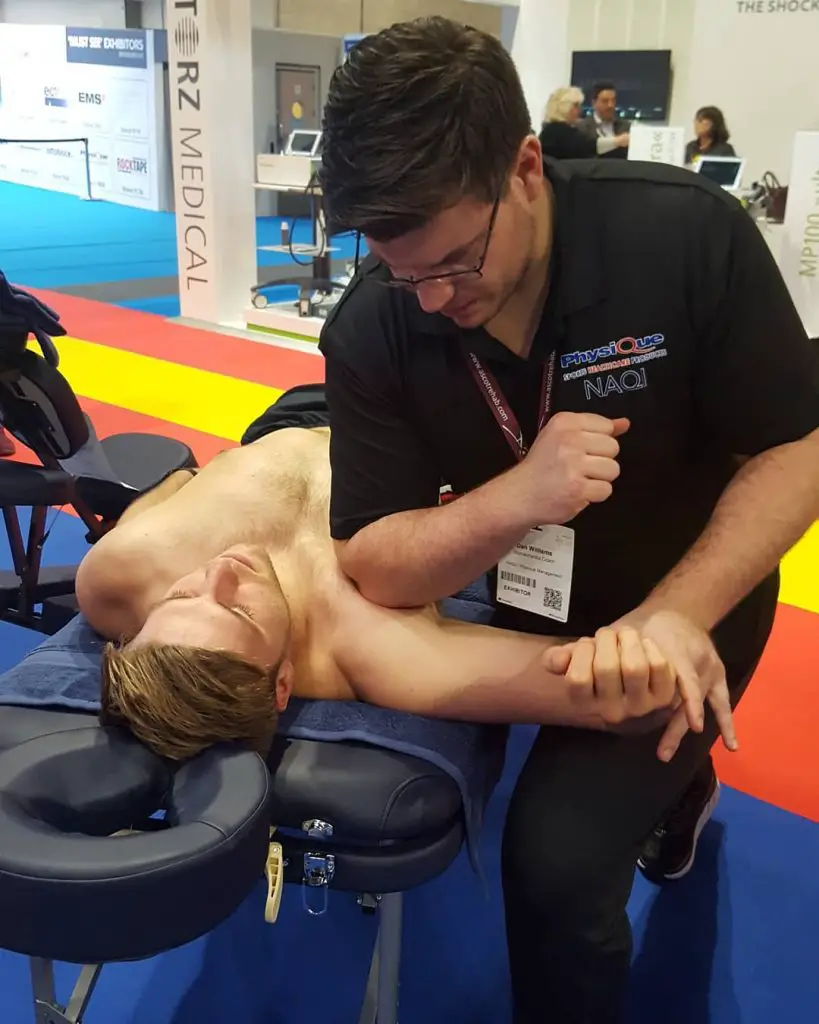
Daniel A. Williams the Therapy Expo in 2018. Photo courtesy of Daniel A. Williams.
Daniel had earned an undergraduate degree in commercial management from Loughborough University. During his studies, he was working as a personal trainer. “I became fascinated with the human body after studying Sports Massage at Loughborough College and progressed through many qualifications from there to where I am today,” Daniel said.
“Although I am not a physiotherapist and I cannot diagnose, etc. I operate in a very similar manner. I see my day-to-day working activities as a hybrid of musculoskeletal manual therapy, exercise therapy, and strength rehabilitation.”
Although Mike’s background is in osteopathy, he “operates more like a physiotherapist.” Like some manual therapists, Mike started in this field in the fitness profession and got interested in helping people recover from their injuries, which led him to become a sports therapist in the U.K.
“One of my instructors was an osteopath so I decided that that was what I wanted to do,” Mike said. “I didn’t, at the time, realise the pre-conceived ideas that the general public have about osteopathy as I had only been involved with those that worked in sports and a number of patients are surprised that I have a gym in my clinic! I spent very little time in my clinic room, and I love being on the gym floor. The mix of osteopathy with the gym work is probably 20% of my work.”
Mike highlighted that one major problem he encountered with teaching pain science is putting it to practice. “It is okay to know what the research is stating and much harder to subtly weave it into every aspect of your work,” he explained. “I have had many patients that have been to a pain clinic and ‘failed.’ They then come to me as a last hope. I ask them what they learnt from the pain clinic and it is often that the physiotherapist was trying to imply that their pain was all in their head.
“This may not have been the intention of the therapist, but it was the result. I think we need to get better at communicating difficult concepts and assessing the understanding that the patient has of what you have just told or demonstrated to them.”
Because of his background as a teacher in Further and Higher Education in the U.K., Mike uses strategies up his sleeves to introduce pain science with patients. He think manual therapists can learn a lot from being teacher.
“We also need to choose our battles. Picking the right moment to introduce new and potentially conflicting information is key,” he said. “Some patients are ready and they soak it up like a sponge. Some are not quite at that stage, and we may need to drip feed information over time to get our message across in a way that doesn’t threaten their deep held beliefs.”
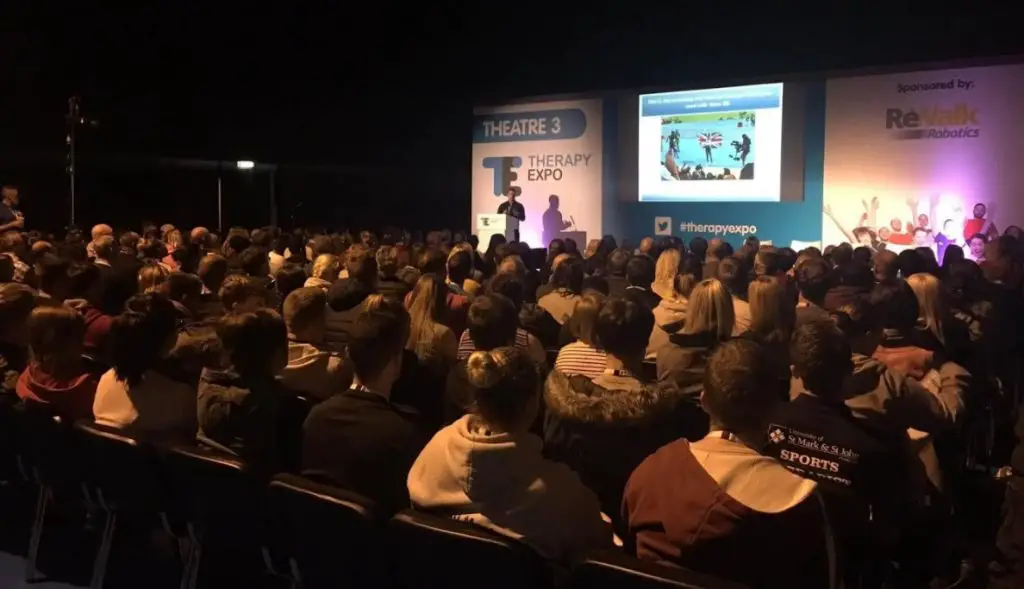
Mike Grice presents “Working with Olympic Athletes” at the Therapy Expo in 2016. Photo courtesy of Mike Grice.
Part of the Movement Therapy Diploma teaches clinicians to communicate to patients, which seems to be overlooked in many manual therapy courses.
“I hope to ethically inform the public and the [manual therapy] profession to cease teaching outdated narratives and try adhere to something resembling an evidence informed approach to what we do as much as possible, ideally without making therapists who have learnt outdated narratives feel that their original education was a waste of time,” Daniel said. “We all have a journey to go on with our own personal development and education. Sometimes we stray from what some would see as the right path, but learning from those detours builds a larger knowledge that sometimes makes us better able to understand the people we are trying to help.
“The pursuit of being evidence-based is a long and hard road, and some people do not want to undertake that journey, but we can help guide them with better education at every level.”
Mike emphasized that communication with patients is just as important as techniques and understanding research. “Our course is a three-year debate. We encourage questions, we present latest findings and discuss the points,” Mike said. “Our first module is in research methods and critical analysis and there are a number of massage therapy qualifications in the U.K. that do not mention where to access papers, how to read them, how to critique them.
“We don’t teach ‘techniques’, we teach concepts so that when the therapist is stuck, they can figure out their own plan—with their patient as a partner. We allow our students to re-sit modules as many times as they like throughout their diploma. We want them to be comfortable and confident with what they have to do. We also have a great support network for after graduation. Learners become part of the Movement Therapy family.”
For more information about Movement Therapy Diploma, visit www.mtclinics.com.
The School (Bristol, U.K.)

Founder Anna Maria Mazzieri teaches at The School, one of a few continuing education providers that uses a modern narrative to explain how massage therapy works for pain relief and improve movement and mood. Photo courtesy of Anna Maria Mazzieri.
One major massage therapy institution in the U.K. that had updated their narrative and courses about how massage works is called The School, which is has two locations: one in Exmouth and the other in Bristol. Founded by Anna Maria Mazzieri in 2008, she got into massage therapy by taking an introductory course “as a hobby,” but that was the first step in her journey to a practicing therapist, educator, and a clinic owner.
“Soft tissue therapy fits very well within a biopsychosocial framework, which sees the person and their experience as the centre of the interaction,” Anna Marie said. “However, our narrative must align with current understanding of mechanisms of effects and with the evidence surrounding self-efficacy.
“Becoming a professional whose role is to help people suffering with pain or injury, comes with great responsibility of ‘do no harm,’ and as we know harm, can come in more than just physical forms. Hence, we must be mindful that our thoughts, interpretations, decisions, and language do not perpetuate or create further suffering.”
She has welcomed the gradual shift seen in manual therapy from the biomechanical model of pain to the biopsychosocial model that is more “neurocentric and psychologically-informed,” which now forms the basis of all her and her colleagues teaching . She thinks that this update “better validates the complexity” of the clients and patients that massage therapists work with.
“Evidence is consistently telling us that understanding the person in front of us is more important than our hands-on skills,” she explained. “Practitioners seem to be comfortable with both that concept and with the essence of the biopsychosocial model. However, they often report to be struggling to translate that knowledge into clinical practice. So my colleagues Matt Scarsbrook and Becky DeMott Horton and I set up a series of continual development courses taught by us and some delivered by leaders in the field addressing that need and also went a step further by creating The Massage Collective, a grassroots movement, which through their Massage Matters podcast, aims to support massage therapists of all levels, being comfortable with applying current evidence based principles into their practice.
“Biopsychosocial Subjective Assessment is a course that works through the importance of the subjective assessment, the evidence around the effects of interview process and explores different strategies including the principles of motivational interviewing, how to use the findings of a thorough subjective assessment to inform treatment and making client interactions truly collaborative.
“Subjective assessment is itself an intervention and has so far been under-utilised by soft tissue therapists. Whilst we have refined our skills in profiling the injury by gathering information including type of pain, the onset, the mechanics of injuries, we are not yet understanding the person well enough. How can we provide effective client-centred care if we do not know who the person in front of us is? What they like, dislike, how they are experiencing life at the moment with the pain and how they see their role in changing what they are experiencing. As Craig Liebenson termed it, ‘we need to profile the person as much as the injury.’”

Anna Maria is an advocate of vocation training within the massage therapy profession as it attracts more students who bring their life experiences to the learning environment. However, she mentioned some criticism with this idea.
“I am aware that because the vocational nature coupled with the relatively new history of clinical framework of our profession, science and evidence-based understanding have not been as much in the forefront of training and practice as it should and needs to be,” Anna Maria said. Thus, all the courses she delivers through The School range from introductory courses to the ISRM Level 5 BTEC Diploma and Postgraduate Continual Development Courses are underpinned by an evidence-informed approach.
“At the heart of all The School’s training are some key elements: a science-informed understanding of mechanisms of effects, a strong bias towards the use of language, strategies to promote self-efficacy and to support the person in the behaviour change process. All are delivered within a clinically applicable framework.”
Since she wants all massage therapists to see themselves represented in the musculoskeletal care profession, Anna Maria feels that online discussions and debates should also focus on the what therapists can do rather than what they cannot do.
“We wanted to shine a light on what massage can do and how up-to-date and accurate explanations of mechanisms are used. It can play a valuable role within the evidence-based framework,” she said. “Ultimately, we want massage therapists to feel confident and proud of the role they play.”
For more information and to be part of that conversation, please visit at https://www.thestschool.co.uk/
This list will likely grow and be updated.
A native of San Diego for nearly 40 years, Nick Ng is an editor of Massage & Fitness Magazine, an online publication for manual therapists and the public who want to explore the science behind touch, pain, and exercise, and how to apply that in their hands-on practice or daily lives.
An alumni from San Diego State University with a B.A. in Graphic Communications, Nick also completed his massage therapy training at International Professional School of Bodywork in San Diego in 2014.
When he is not writing or reading, you would likely find him weightlifting at the gym, salsa dancing, or exploring new areas to walk and eat around Southern California.

